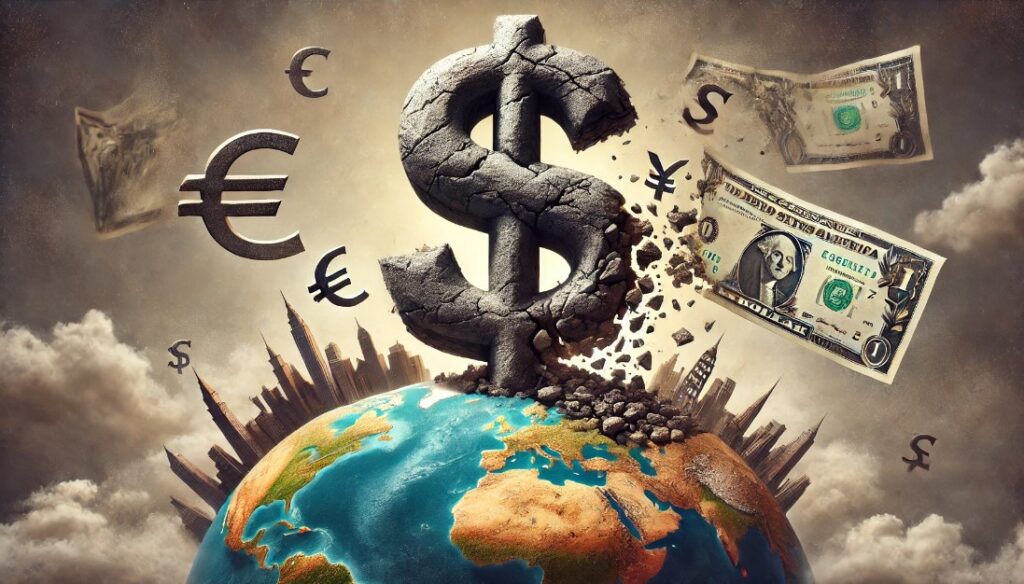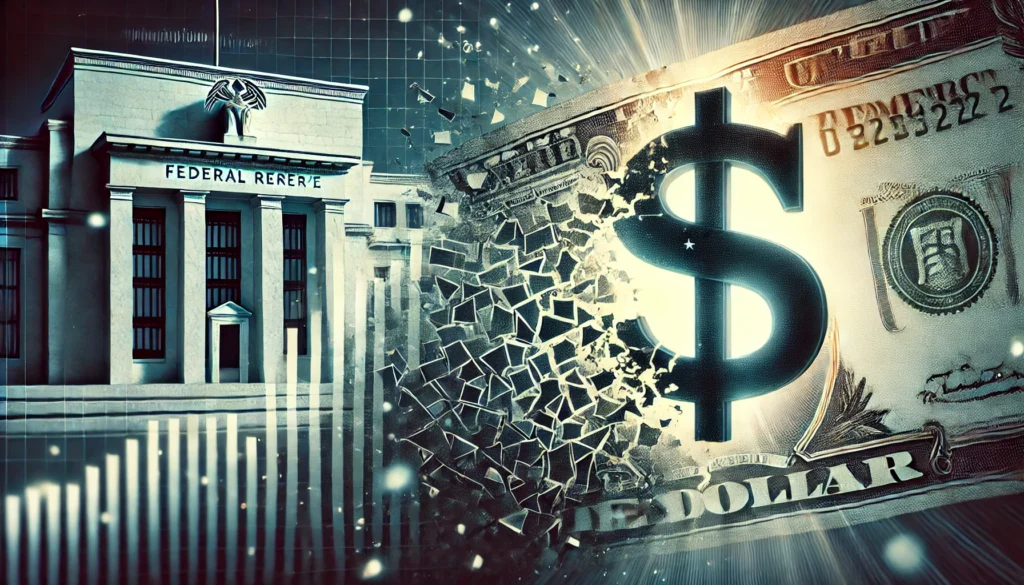What Is a Global Reserve Currency and Why Does It Matter?
You’ve likely heard the term “global reserve currency,” but do you know what it really means? Let’s break it down: a global reserve currency is used for transactions between countries with different currencies. For example, if a Swiss company buys Peruvian silver, they likely use U.S. dollars for the transaction. This simplifies trade because most global commodities, like oil and silver, are priced in dollars.
Why is this important? The U.S. dollar’s status as the global reserve currency creates a massive demand for dollars worldwide. This demand gives the U.S. economy stability and privilege—other countries need dollars to trade, which keeps interest rates low and the U.S. running smoothly. But how long can this “exorbitant privilege” last?
A Look at History: How Global Reserve Currencies Rise and Fall
Throughout history, many currencies have held the title of global reserve currency. The Roman denarius, the British pound sterling, the French franc—all of these were once dominant currencies. But they didn’t last. Whether it was war, trade deficits, or poor economic management, these currencies eventually collapsed.
The U.S. dollar became the world’s reserve currency after World War II, thanks to the Bretton Woods system. At that time, the U.S. controlled two-thirds of the world’s gold and promised that dollars could be exchanged for gold. But in 1971, President Nixon ended that promise, cutting the dollar’s link to gold. Since then, the dollar has been backed only by the U.S. government’s word—and a deal with Saudi Arabia to price oil in dollars. How long can faith in the dollar hold?
The Birth of the Petrodollar: How Oil Saved the Dollar
After the U.S. broke its promise to exchange dollars for gold in 1971, the world was furious. To keep the dollar relevant, President Nixon made a deal with Saudi Arabia to sell oil exclusively in dollars. This gave the dollar a new life as the “petrodollar,” ensuring global demand for dollars remained high.
But while this saved the dollar, it also created a dangerous situation. The U.S. could now print as many dollars as it wanted, leading to inflation and a massive increase in the national debt. Without the backing of gold, the dollar’s value became tied to faith in the U.S. economy. How long can the petrodollar keep the U.S. afloat?
The U.S. Debt Crisis: How Printing Dollars Leads to Disaster
The U.S. has been on a spending spree for decades, printing trillions of dollars to cover budget deficits. Every dollar printed represents a promise to repay, but with $30 trillion in national debt, it’s clear the U.S. can’t keep up. This reckless spending is one reason the dollar is losing its status as the global reserve currency.
Other nations, seeing the instability of the U.S. economy, are diversifying away from dollars. Central banks around the world are buying up gold and other currencies to protect themselves from a collapsing dollar. What happens when the world no longer wants dollars? The global economy could be in for a rude awakening.
The Rise of Alternatives: Could the Dollar Be Replaced?
As the U.S. dollar declines, other currencies are stepping up. The International Monetary Fund (IMF) has created Special Drawing Rights (SDRs), which are backed by a basket of currencies. China is pushing its digital currency, the e-yuan, and Russia is working on a reserve currency for the BRICS nations (Brazil, Russia, India, China, and South Africa).
The shift away from the U.S. dollar is happening gradually, but it could accelerate quickly. As nations like China and Russia create alternatives, the world’s reliance on the dollar weakens. The once-dominant global reserve currency could soon find itself in a battle for survival.
What Happens When the Dollar Loses Its Crown?
When the dollar loses its status as the global reserve currency, the effects will be felt across the U.S. economy. Inflation will rise, imported goods will become more expensive, and Treasury rates will spike. The U.S. will no longer enjoy the benefits of printing money without consequences.
If central banks start dumping dollars, the Federal Reserve may lower interest rates and print more money—leading to hyperinflation. In this scenario, the U.S. economy could collapse, and the global financial system would be thrown into chaos. The world would shift its focus to other currencies, leaving the dollar behind.
Protect Your Wealth: Why Gold Is the Safe Haven
As the U.S. dollar’s dominance fades, what can you do to protect your wealth? The answer lies in precious metals like gold and silver. Unlike fiat currencies, gold has intrinsic value and isn’t subject to government manipulation. Central banks around the world are already buying up gold, preparing for the day the dollar loses its global status.
Now is the time to diversify your savings into assets that can hold their value. Gold has stood the test of time, and it could be your best defense against the coming economic storm. Don’t wait until it’s too late—start protecting your future today.



